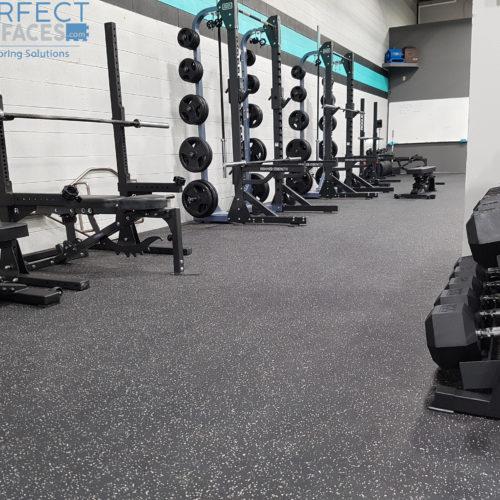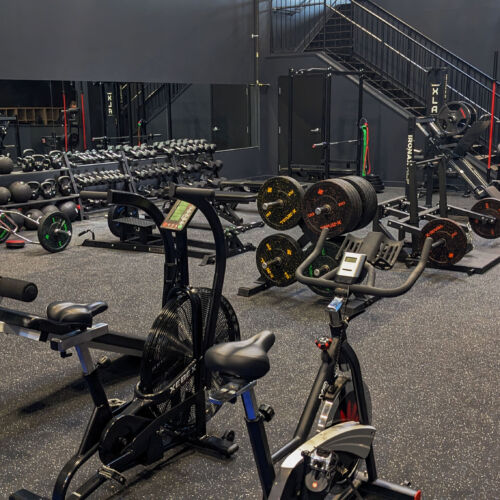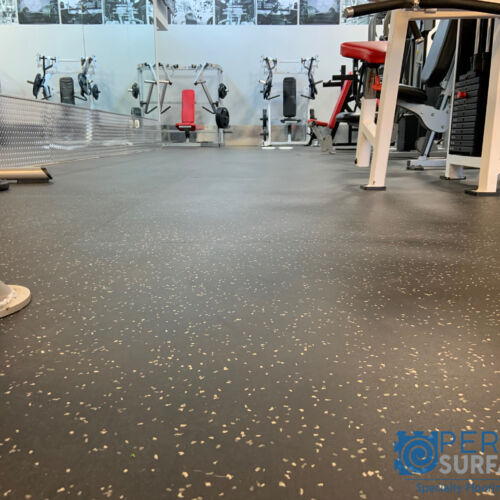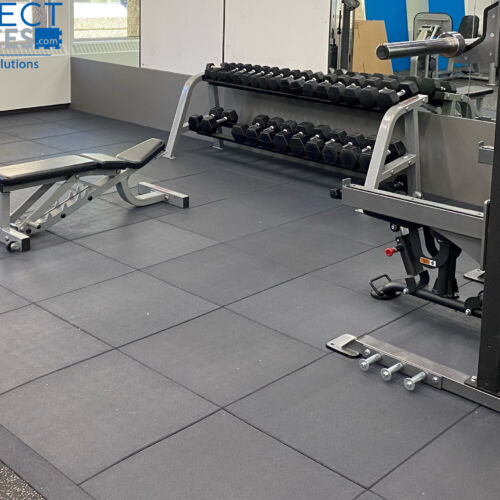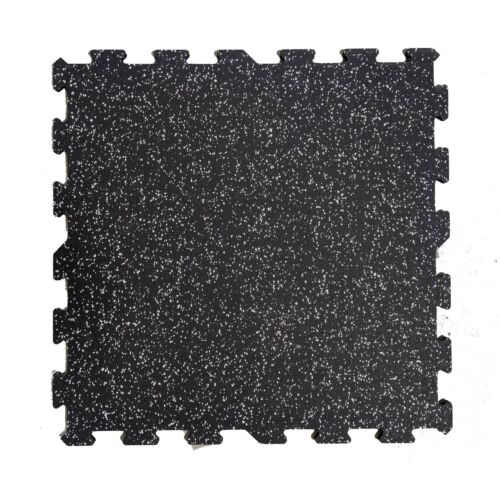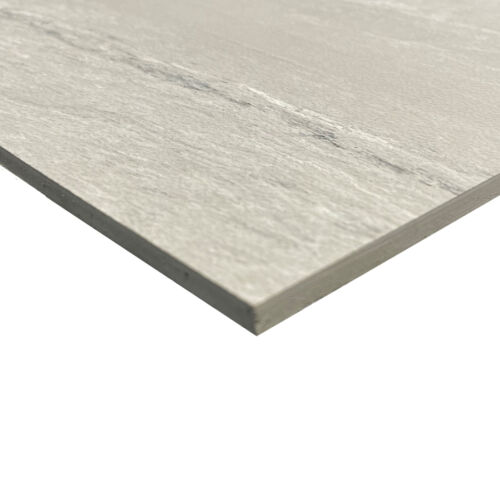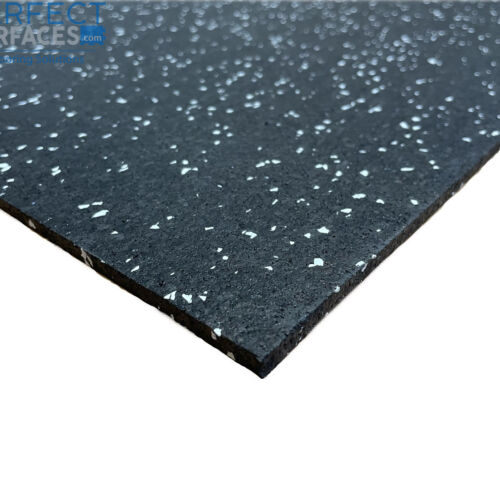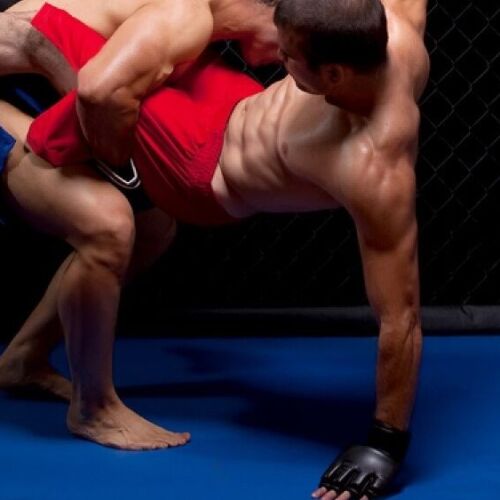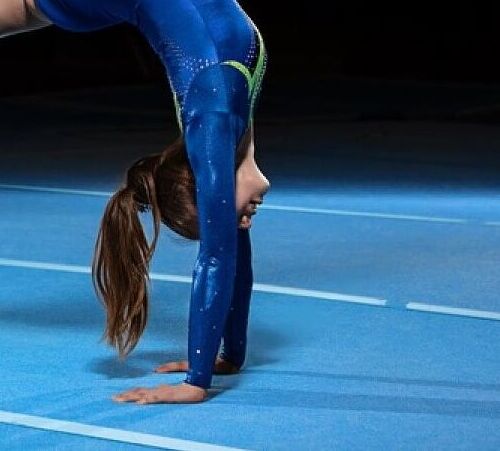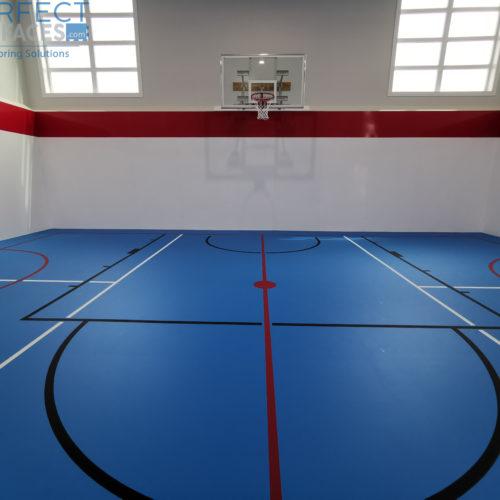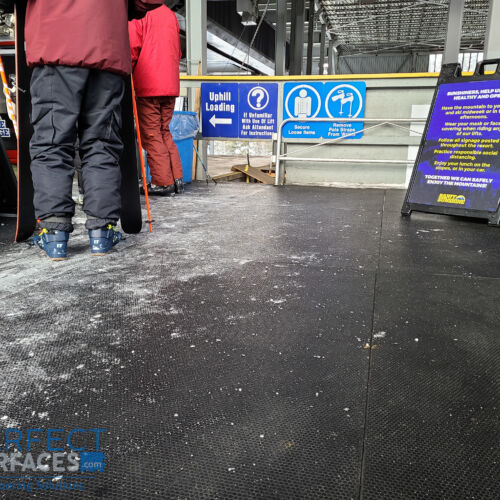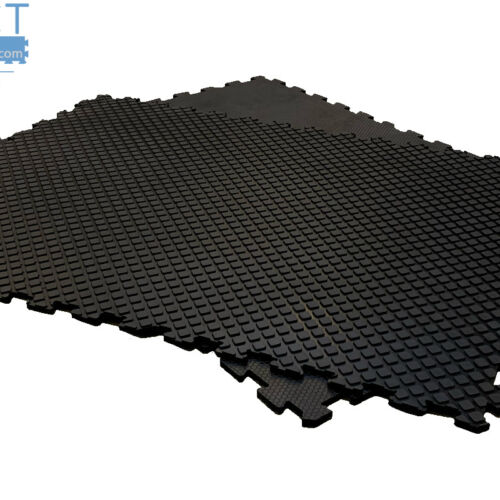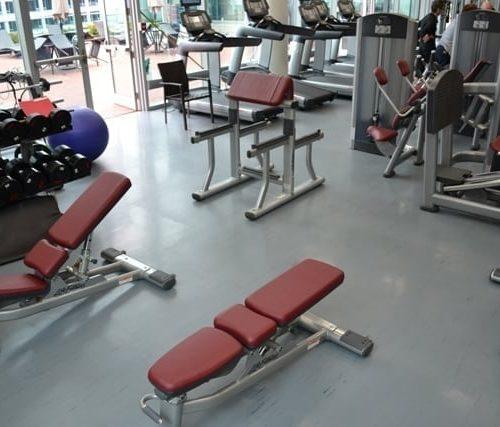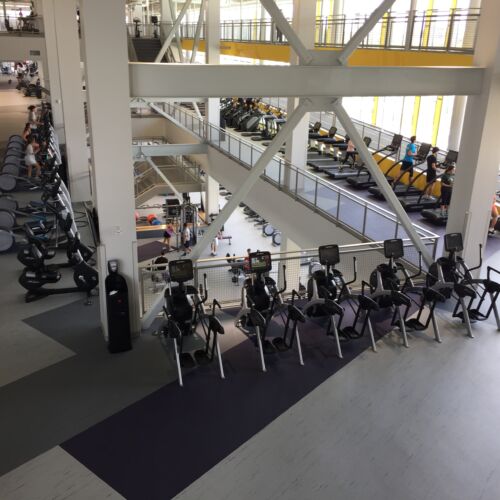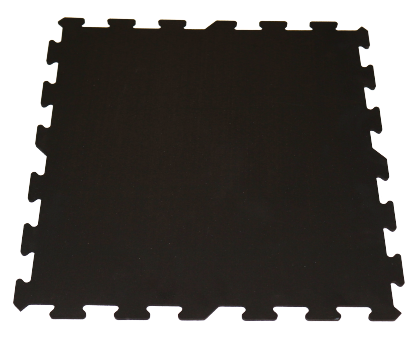Gym foam fitness flooring
While many foam fitness flooring products become indented under the weight of heavy fitness equipment, rubber tiles and rubber matting will maintain their shape and perform well under extreme stress.
Rolled rubber flooring
Rolled rubber fitness flooring and rubber gym tiles both offer anti-fatigue and ergonomic comfort properties combined with very low maintenance. Both also provide superior durability and slip-resistance for applications that require resilience, sound absorption, and traction.
While most resilient rubber fitness flooring options are easy to install, these (and other) factors are wise to consider to choose the optimal product, including its dimensions, thickness, and colour for your application. For example, specific movements such as lateral movement exercises common in P90X would be best performed on rolled fitness rubber, as these movements can shift loose-laid interlocking rubber tiles and create a tripping hazard. Similarly, 25′ rubber rolls are ideal for quickly and easily covering large areas with fewer seams- with many thicknesses are available for different applications.
Consider the length of time that your flooring will be installed…
You wouldn’t use the same thickness of a stretching mat to support heavy equipment, you’re placing treadmills, exercise bikes and weight benches on there! Also, this fitness equipment will be on there a long time. This is all an important consideration of what fitness flooring to choose.
Installation…
While interlocking fitness tiles or rubber sheets are easy to lay and easy to remove, rubber fitness rolls are just as simple to roll up and take away- but your investment may be better protected with versatile fitness flooring tiles that can be reused in other spaces and configurations, versus rubber fitness rolls that may have been custom cut to size. Most products can be used either loose-laid, taped or adhered to the floor, so that degree of permanence is entirely up to you.
What about artificial gym turf?
Another popular flooring choice in fitness facilities is artificial gym turf, with athletic-specific variations designed with cushioned backing to help protect athlete’s joints safer from repetitive stress injuries. Agility training, sled work, and performing footwork drills are common exercises/movements that require artificial athletic turf underfoot; it is beneficial to note that artificial turf is easy to install (with no infill or adhesive required), and easy to roll up and tuck away until the next time it is needed.


